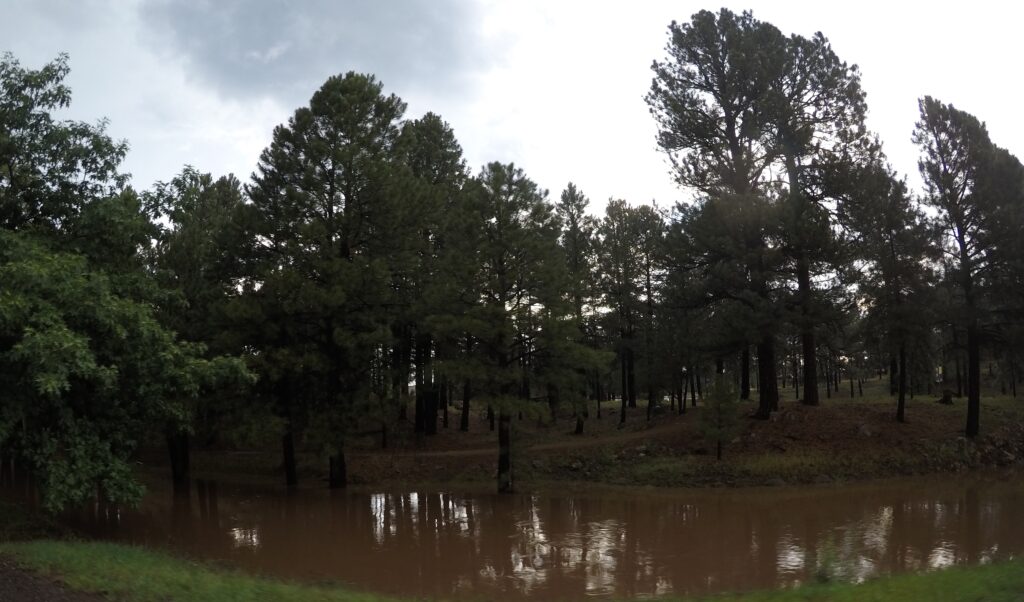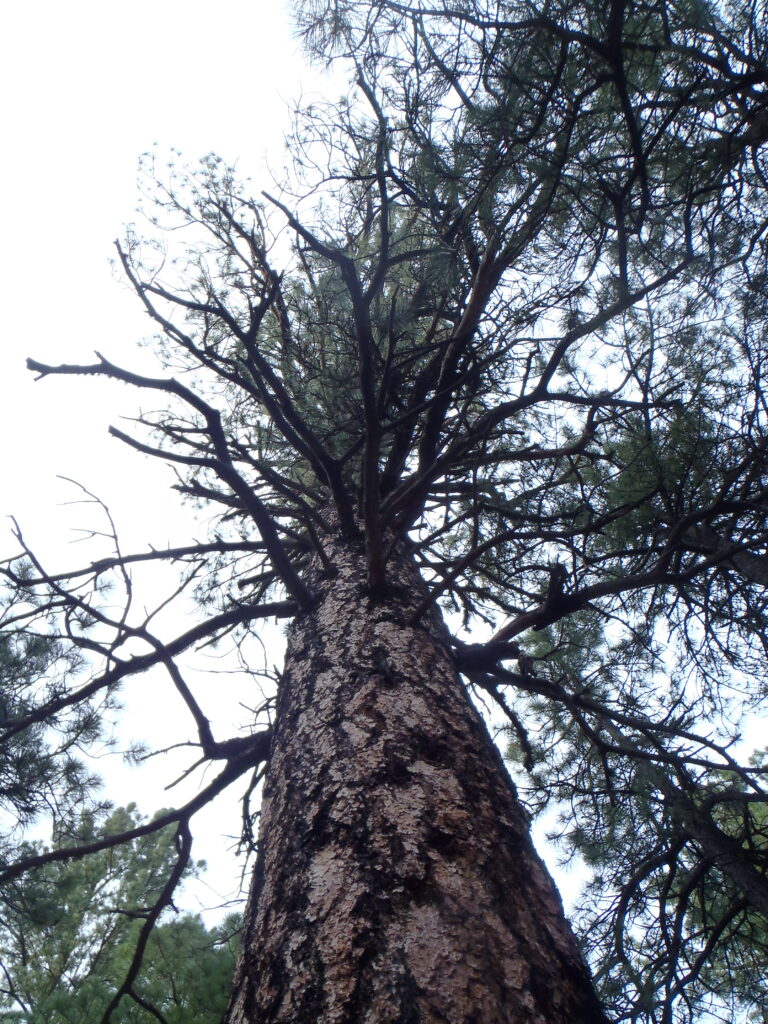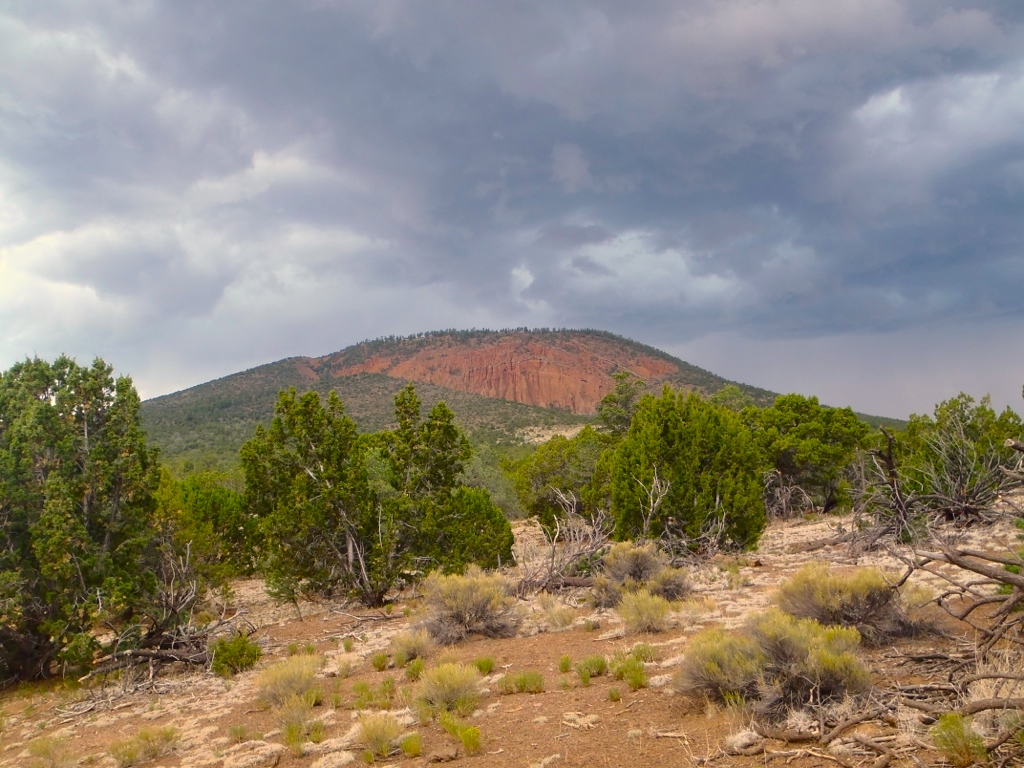“My forest is dying,” he said as we drove northwest on highway 180 through the Coconino National Forest. I looked out the truck window at the many brown and gray lifeless trees among the green and I asked if that wasn’t normal for summer. Billy, a seasonal wildland firefighter, said no, there were many more brown trees this year in July than previous years. It was a visual sign of what environmental scientists call forest morality. A warning that the Coconino National Forest could be reaching a tipping point.

“Fireways” evokes the complex interactions between fire and humans. Each year the Coconino National Forest burns; each year it grows back. Yet an impact of anthropogenic climate change is drought, drying out the trees and leaving them less likely to return after fires that burn hotter and more frequently. Fire management policies have also affected the life of the forest, with an emphasis on suppression leaving the forest at risk from more intense blazes. This is the “fire paradox” of contemporary fire ecology, in which ever increasingly bigger blazes are caused by a combination of suppression policy and climate change, with each problem compounding the other.

More intense, frequent, and complex fires burn each year over longer fire seasons, with so-called “megafires” occurring over the past thirty years. The Indigenous people of the area, such as the Apache, practiced controlled burning to manage the forest. This practice has been taken up by the “good fire” movement, which advocates regular lighting of controlled burns to reduce fuel. Less fuel in the form of brush and dead trees means that intense fires and megafires are less likely.

In Arizona, fire seasons are a regular part of the climatological cycle in a fire-adapted ecosystem. The Coconino National Forest covers a large part of Northern Arizona. It is the largest contiguous ponderosa pine forest in the world. Each year during the fire season from May-July, large forest fires burn. The predominant cause of forest fires is lightning. Fire season ends when the monsoon rains come, usually in August-September.

Forest fires in Arizona have gotten worse. In recent years, monsoons have been weaker, and the fire season is prolonged by a few days. Some years, the rainfall is so insignificant that local people call it a “nonsoon” year. Other years, intense bursts of sudden rainfall causes flash floods. The fires strip the land of trees and vegetation, which along with soil erosion, leaves the surrounding communities vulnerable to mudslides. In June 2021, monsoon rains caused flooding and mudslides through the site of the burn scar from the Museum Fire of 2019. Video captured flood waters sweeping away a Toyota Prius as mud and brown water coursed through neighborhoods close to downtown.

Ponderosa pine trees make up much of the tree growth in the Coconino National Forest. Ponderosas do not grow at higher temperatures. As the average temperature rises due to anthropogenic climate change, the ponderosas recede. Fire is necessary for tree reproduction in the forest, clearing the grasses and scrub so the larger trees can grow in the regenerated soils. Ponderosas have a thick, fire-resistant bark. The low-intensity fires of 100-years ago burned the grasses but did not reach the lower branches of the tall ponderosas.

Now more intense fires are burning entire tree stands. Ponderosas only reproduce via seeds, which only scatter a certain distance from a parent tree. If a whole stand burns, it is much harder for the seeds to regrow. Literature from tree surveys show that the forest is close to its tipping point, after which the annual fires will destroy so many trees they will be unable to grow back.
The US Forest Service is responsible for fire management in the Coconino National Forest. In recent years, they have begun to light more controlled burns to reduce the fuel in the forest and decrease the intensity of forest fires. The aim is to reinstate a fire regime that encourages the dispersal of seeds and renewal of soils that promote forest health. However, local people complain about controlled burns, perceiving them as dangerous, reducing air quality due to smoke, and increasing closures of the forest for recreational use.
Local people and visitors use the forest extensively for hiking, camping, and outdoor sports. Recently, the Forest Service has tried to limit use of the forest around the Verde Valley area by restricting camping to approved campsites only. There are perennial problems with trash left in the forest by campers and stray sparks from campfires and cigarettes igniting forest fires. However, the Forest Service also encourages recreational use of the forest, such as by leasing land to a ski resort on the San Francisco Peaks. This is one of the sacred mountains to the Diné people (Navajo), many of whom object to the presence of a ski resort. Historically, the Forest Service has also been responsible for opening large tracts of the forest to logging.

As fires burn tree stands that are unable to regrow, the forest is turned to grassland. In the process, what was a carbon sink becomes a carbon source. The fire paradox of anthropogenic climate change and management policies of suppression are creating wildfires of such magnitude that will ultimately bring abrupt ecological change to the forest.

Susannah Crockford is a lecturer in anthropology at the University of Exeter, UK. Her research interests cover the ethnographic study of ecology, religion, and medicine, with field sites in the southern and midwestern US and northern Europe. She has been visiting Northern Arizona for fieldwork since 2012. Her first monograph was published in May 2021 by the Class 200 list of the University of Chicago Press, titled Ripples of the Universe: Spirituality in Sedona, Arizona. Her next book will be an ethnography of climate change. Follow on Twitter: @suscrockford.